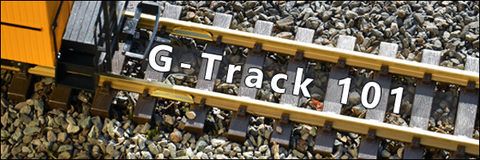Track Facts 3: Virgin Brass Rail IS Important.

Track Facts: A Series Explaining the Truth Others Don't Want You to Know.
In our last Track Facts, we discussed the error in the statement that “Brass is Brass.” It’s not all the same!
In our current episode of Track Facts, we will show you how important it is to have the correct “Recipe” and why recycled brass cannot match “Virgin Brass rail”.
Is Virgin Brass a Big Deal?
Is the term “Virgin Brass” just a clever marketing term? Absolutely NOT! It has real meaning. Virgin Brass means all the metals that go into making the brass alloy have been:
- Mined – Mined fresh and new out of the ground
- Refined – Processed to extract the desired metal from the raw ore, which is mostly dirt and rock
- Combined – Mixed with the other metals needed to make the ideal rail alloy
Notice one extremely critical thing that is not mentioned in this process – there is no recycled scrap metal anywhere! Recycling is good for the environment, but you don’t want recycled materials in your rails!
Obviously, brass made with recycled materials, also known as scrap metals, should cost less and be more readily available. Relatively small metal recycling and reprocessing plants can be found in many locations around the world. And these metals can be used for many things where the purity of the alloy is not so important. But remember what we said about alloys in earlier episodes of Track Facts – little changes in the “ingredients” make a big difference in the results. Rail made from scrap metal is not good for your railroad. And yes, certain brands have sold tons of it to G-scale customers.
What About Recycled Brass?
A big problem with recycled brass is the impossibility of removing every bit of impurities. For example, a seemingly little thing like 1% or so of scrap iron remaining in your brass may not sound like much. And it’s nearly impossible to find recycled brass with “only” 1% of scrap iron in it. Most recycled brass has between 5% and 10% of undesired substances in it, usually more than half of that being scrap iron. With that, you get a brass that is harder to work with, and far more importantly, a brass that actually develops surface rust. With only 1% percent or so of scrap aluminum remaining in the mix, you get brass that stays an ugly, unnatural, bright yellow color for years outdoors.
Ugly-looking rail is only the beginning... There are a dozen (usually more) other metals and substances, in varying percentages, which only make a poorer rail material and simply can’t be removed from the recycled brass alloy. Recycled brass is impure and can never go back to being virgin brass. These things make a huge difference!
With recycled “scrap” brass, you get a brass that does not conduct electricity as well, and a brass that oxidizes or corrodes much more rapidly. It’s much harder to clean and keep clean. In fact, the widespread proliferation of this rail material is one thing that led, decades ago, to some saying stainless steel was necessary for G-Scale rails. But solving one problem by creating other problems – as pointed out in Track Facts episode 1 – is not the way to do it.
Aside from this, you never really know from one batch of scrap brass rail to the next exactly what it will be. Not just the big ingredients like copper and zinc, but the percentages of all the substances in the rail will vary widely. Some may be better, some worse, but none of it is good for your G-Scale rails. Given how cheap and commonly available recycled scrap brass is around the world, you might wonder why track made with these rails would be more expensive than track made with the ideal virgin brass rail alloy. And when you hear someone saying no other track can match up to the quality of their low-grade brass track, you might wonder where the facts are to back up those claims.
More to come next time...





